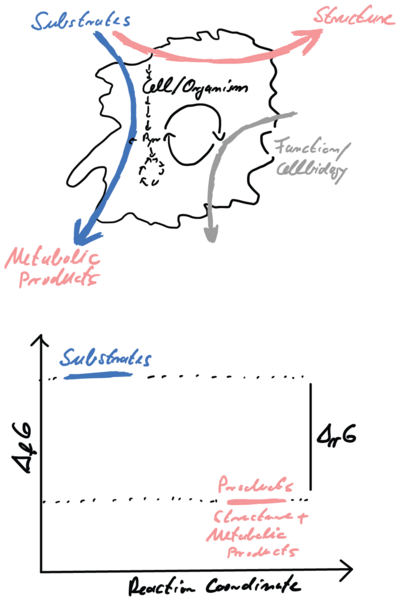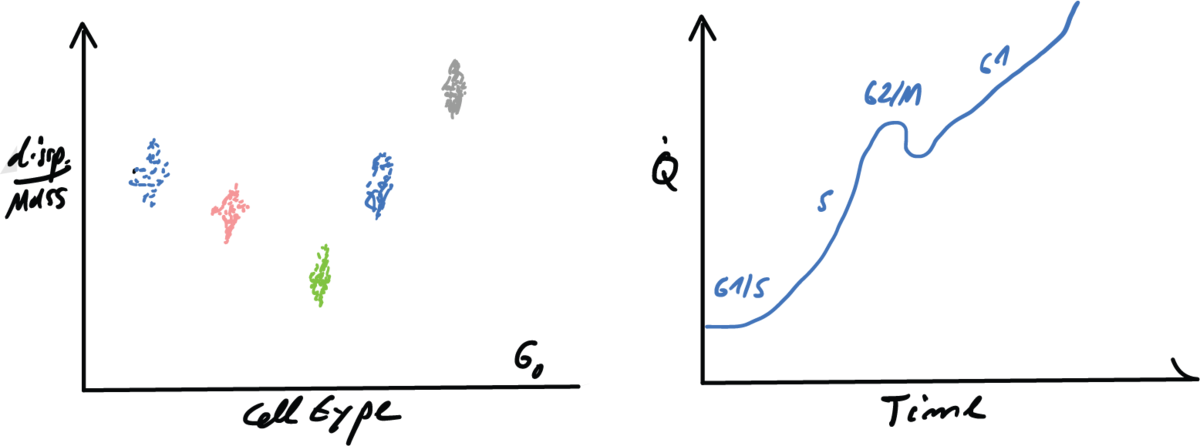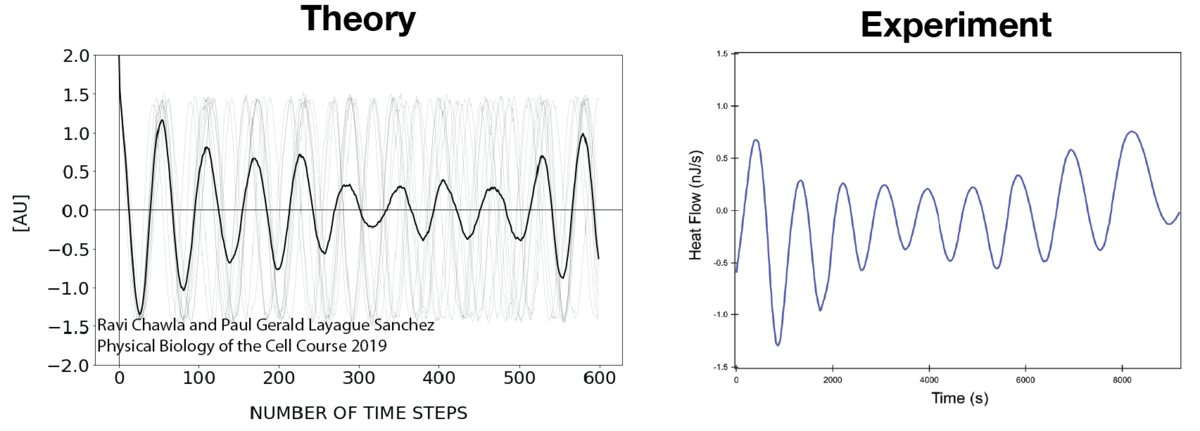Living systems are active and open systems constantly exchange energy and matter with their environment. They function out of equilibrium and require a continuous supply of Gibbs energy to remain alive, grow and develop. Conceptually, cells and organisms can be described as an overall biochemical reaction, proceeding from the nutrients as substrates towards the synthesis of structure and metabolic wastes as products. Homeostasis, growth and development is fueled by the difference in Gibbs energy between the molecules the system produces (i.e., cellular structure and the waste products) and those it uses (i.e., the nutrients). This Gibbs energy difference needs to be negative for the reaction, or homeostasis, growth and development, to occur spontaneously at a finite rate. This negative Gibbs energy change is not stored in the system, but dissipated to the surrounding media in the form of heat as well as excreted residual metabolic products such as CO2, lactate, etc. giving rise to the systems metabolic rate. Hence, this Gibbs energy dissipation increases the systems total entropy production in accordance with the second law of thermodynamics.
The aim of this project is to develop tools to the infer metabolic rates in terms Gibbs energy by combining quantitative calorimetric heat dissipation measurements with metabolomic, analytical biochemistry and theory approaches. We believe that these approaches will help us to determine the thermodynamic driving force and efficiency of biological systems.


Embryogenesis - the development of a fertilized oocyte into a multicellular organism intuitively increases organismal complexity. Decades of research has started to unravel molecular principles regulating developmental progression in time and space, broadening our current understanding of development. Embryonic development is clearly an irreversible process and, thus, needs to expend energy. However, the physiochemical basis, or how chemical and physical processes use energy, and act together to transform a zygote into juvenile organism, is still far from understood.
In this project we use an interdisciplinary approach based on calorimetry, metabolomics, imaging and theory to quantitatively understand the energy fluxes in developing embryos in space and time. We are eager to understand what are the energetic costs of key cellular processes during development and how embryonic metabolism fulfills those costs. How does the cell biology of metabolism influence cell physiology and embryonic development? Do embryonic energy fluxes constrain development e.g., developmental rates and robustness, and are embryonic energetics evolutionary conserved or divergent?
The goal of this project is to determine the energetic costs of maintaining a non-equilibrium steady-state for quiescent non-growing cells and how much more energy is required to build a new cell. How is this metabolic energy allocated to the various cellular processes required for cell maintenance, growth and proliferation? Long-term we are aim to understand whether energetic trade-offs and thermodynamic optima constrain rates of cell growth, proliferation and differentiation within and between different cell types, between normal versus diseased cells, and within and between species.


Theoretical studies have estimated the amount of energy dissipation needed for cellular processes to function accurately and reproducibly. This raises the question of how much energy do cellular processes dissipate in a physiological context and what is the role of energy dissipation by these systems?